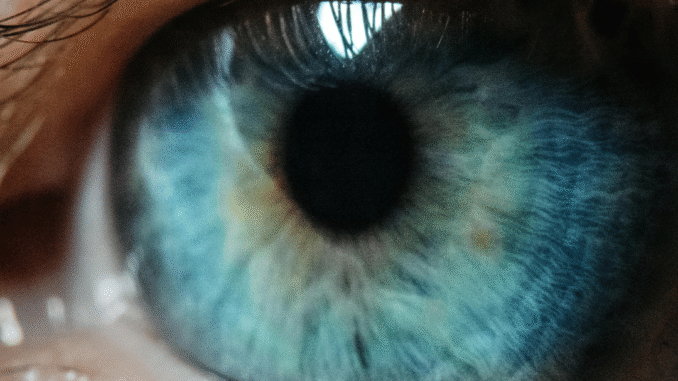
By Matthew K. Adams, MD, MBA
They say your eyes are the windows to your soul. While that sounds poetic, as an ophthalmologist, I’ll tell you they’re actually windows to your genetics—and occasionally to your health. Let’s talk about what really determines your eye color, whether that hazel sparkle says anything about your personality, how your iris shade might influence your risk for certain medical conditions, and whether you can, or should, change it.
What Determines Eye Color?
Eye color is primarily determined by genetics, specifically the amount and distribution of melanin (pigment) in your iris. It’s not random: it naturally varies.
A lot of melanin gives you brown eyes; very little results in blue eyes; somewhere in the middle yields green, hazel, or gray. Multiple genes in your DNA know (and influence) eye color, but the two main players—OCA2 and HERC2—are the main contributors.
And yes, your parents’ eye colors can influence yours, but it’s not as simple as “brown eyes + blue eyes = blue.” While brown is generally dominant over blue and green, and on a simple Punnett square that’s what you’d expect, real-world genetics are messier: eye genes from both parents (and sometimes grandparents) shuffle, creating unexpected outcomes. That’s why a child with two brown-eyed parents can sometimes end up with blue eyes, even though neither parent have a throw-away child. Unless they do.
Is Personality Reflected in Your Eye Color?
This is where science and folklore get fuzzy. For centuries, people have ascribed traits based on eye color:
- Blue (dreamy)
- Brown (grounded)
- Green (mysterious)
Some people joke that people with blue eyes are “trustworthy,” “pure,” or (as the title here pokes at) a little “crazy.”
No gene codes are down to biology, but behavioral stereotypes stick around. In short: eye color says nothing definitive about your personality, but the myths make for fun conversation starters.
Does Eye Color Predispose You to Illnesses or Diseases?
Here’s where things get interesting—a little serious. Your melanin levels can indeed influence your eye condition risks:
- Lighter eyes (blue, gray, green) have less melanin, which makes them more prone to light-related conditions like macular degeneration, uveal melanoma (a rare eye cancer), and ocular surface growths. That’s because melanin absorbs and blocks ultraviolet (UV) radiation—they’re a natural sunscreen for your eyes.
- Darker eyes (brown) have more melanin, which offers better UV protection. However, some studies suggest that people with darker irises may have a slightly higher risk for certain types of cataracts and glaucoma.
- Eye color alone is a risk factor, but your genetic makeup, family history, and other variables matter far more than iris shade.
Can You Change Your Eye Color?
Yes, sort of, but not without some caveats:
- Temporary changes: Colored contact lenses clearly offer the most instant transformation. With modern lenses, you can go from slate blue to forest green in the blink of an eye (literally).
- Surgical alterations: A few experimental procedures claim to permanently change eye color—such as implants that sit over your natural iris, or laser treatments that strip away pigment. However, they’re controversial, carry risks, and are not widely recommended by eye health authorities, including infection, inflammation, glaucoma, and blindness.
- Natural changes: Eyes can shift in color as children age, or sometimes during aging in adults.
The safest “eye color change” is lighting, makeup, wardrobe, or contacts. Anything more permanent may color you with risks.
The Takeaway
Your eye color is the product of complex genetic instructions coded deep within your DNA, influenced by melanin distribution and family history. It doesn’t define your personality, but it does have some medical relevance.
Here’s what matters most:
- Protect your eyes from UV light with 100% UVA/UVB sunglasses.
- Watch for health in leafy greens, omega-3s, and regular eye exams.
- Genetics determine much (blood pressure, breast, prostate cancers, etc.), but your environment and choices influence far more.
At the end of the day, every eye color is beautiful and unique. Whether you’re sapphire blue, emerald green, or warm hazel, your eyes tell a story that goes far deeper than the shade you see in the mirror. They’re your passport to how you see the world, but whether light or dark, protect them so you see the world in high definition for years to come.
Fun Eye Color Facts
- Rarest Eye Color?
Green eyes are the unicorns of the iris world—only about 2% of people have them. - Two-Tone Eyes Exist
Called heterochromia, it can be complete (one green eye, one brown eye) or sectoral (one eye with two colors). Causes range from genetics to injury. - Eye Color Can “Bloom” in Babies
Many newborns have blue-gray eyes that darken over the first year as melanin develops. - Hazel Eyes = Light Show
Hazel eyes aren’t just brown-green—they shift color in different lighting due to scattered light and varying pigment. - Red Eyes Aren’t Just in Vampires
In rare cases of albinism, the irises lack pigment and can appear red (pink is the light bouncing off blood vessels in the retina). - Amber Eyes Are Not Just “Brown”
True amber eyes have a golden or copper “tiger eye” tone caused by a pigment called lipochrome. - Not All Blue Eyes Are the Same Blue
The shade depends how fine structures in your iris scatter light—just like the sky. - Eye Color and Night Vision
Darker eyes have a slight edge in bright sunlight. Lighter eyes are more sensitive in low light.


